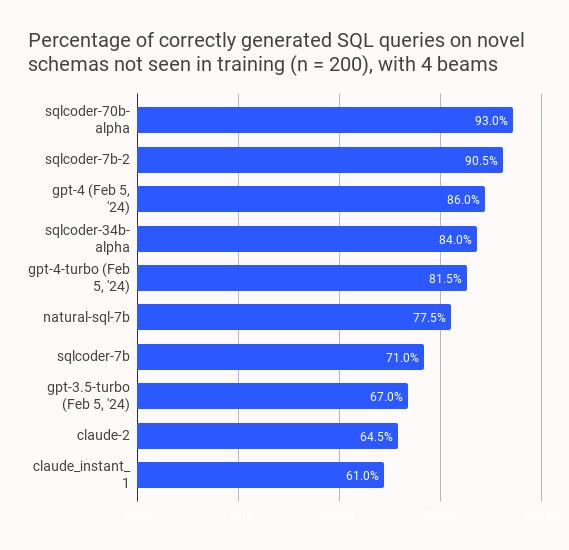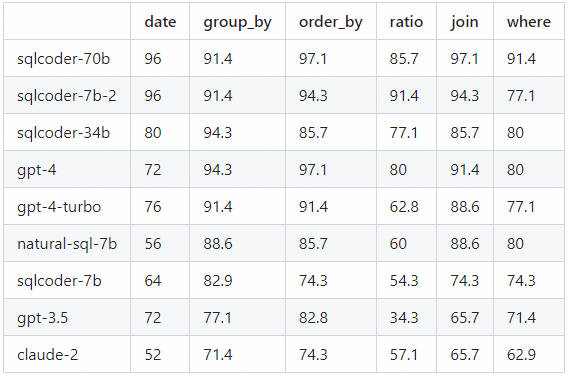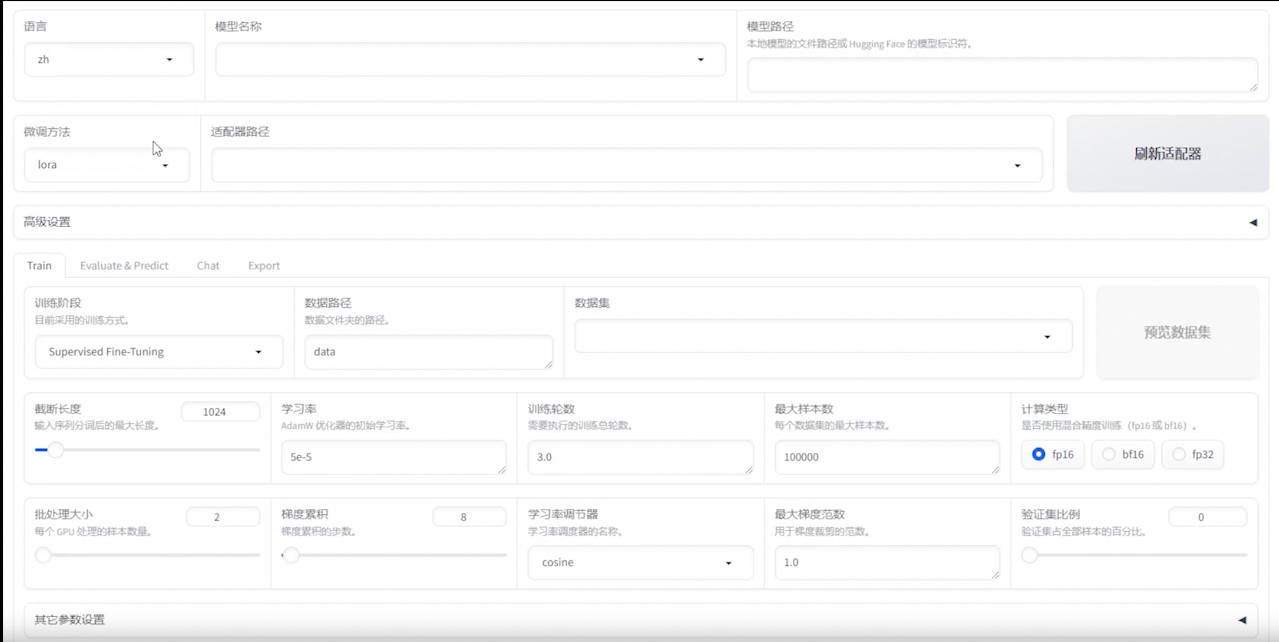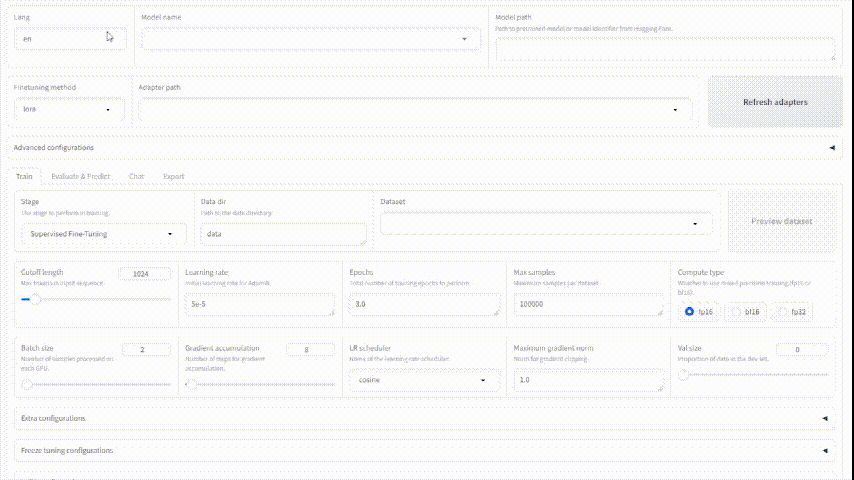
我们提供安全,免费的手游软件下载!
NL2SQL基础系列(1):业界顶尖排行榜、权威测评数据集及LLM大模型(Spider vs BIRD)全面对比优劣分析[Text2SQL、Text2DSL]
NL2SQL基础系列(2):主流大模型与微调方法精选集,Text2SQL经典算法技术回顾七年发展脉络梳理
MindSQL 是一个 Python RAG(检索增强生成)库,旨在仅使用几行代码来简化用户与其数据库之间的交互。 MindSQL 与 PostgreSQL、MySQL、SQLite 等知名数据库无缝集成,还通过扩展核心类,将其功能扩展到 Snowflake、BigQuery 等主流数据库。 该库利用 GPT-4、Llama 2、Google Gemini 等大型语言模型 (LLM),并支持 ChromaDB 和 Fais 等知识库。
官方链接: https://pypi.org/project/mindsql/
https://github.com/Mindinventory/MindSQL

#!pip install mindsql
from mindsql.core import MindSQLCore
from mindsql.databases import Sqlite
from mindsql.llms import GoogleGenAi
from mindsql.vectorstores import ChromaDB
#Add Your Configurations
config = {"api_key": "YOUR-API-KEY"}
#Choose the Vector Store. LLM and DB You Want to Work With And
#Create MindSQLCore Instance With Configured Llm, Vectorstore, And Database
minds = MindSQLCore(
llm=GoogleGenAi(config=config),
vectorstore=ChromaDB(),
database=Sqlite()
)
#Create a Database Connection Using The Specified URL
connection = minds.database.create_connection(url="YOUR_DATABASE_CONNECTION_URL")
#Index All Data Definition Language (DDL) Statements in The Specified Database Into The Vectorstore
minds.index_all_ddls(connection=connection, db_name='NAME_OF_THE_DB')
#Index Question-Sql Pair in Bulk From the Specified Example Path
minds.index(bulk=True, path="your-qsn-sql-example.json")
#Ask a Question to The Database And Visualize The Result
response = minds.ask_db(
question="YOUR_QUESTION",
connection=connection,
visualize=True
)
#Extract And Display The Chart From The Response
chart = response["chart"]
chart.show()
#Close The Connection to Your DB
connection.close()
DB-GPT-Hub是一个利用LLMs实现Text-to-SQL解析的实验项目,主要包含数据集收集、数据预处理、模型选择与构建和微调权重等步骤,通过这一系列的处理可以在提高Text-to-SQL能力的同时降低模型训练成本,让更多的开发者参与到Text-to-SQL的准确度提升工作当中,最终实现基于数据库的自动问答能力,让用户可以通过自然语言描述完成复杂数据库的查询操作等工作。
本项目案例数据主要以 Spider 数据集为示例 :
其他数据集:
DB-GPT-HUB目前已经支持的base模型有:
模型可以基于quantization_bit为4的量化微调(QLoRA)所需的最低硬件资源,可以参考如下:
| 模型参数 | GPU RAM | CPU RAM | DISK |
|---|---|---|---|
| 7b | 6GB | 3.6GB | 36.4GB |
| 13b | 13.4GB | 5.9GB | 60.2GB |
其中相关参数均设置的为最小,batch_size为1,max_length为512。根据经验,如果计算资源足够,为了效果更好,建议相关长度值设置为1024或者2048。
git clone https://github.com/eosphoros-ai/DB-GPT-Hub.git
cd DB-GPT-Hub
conda create -n dbgpt_hub python=3.10
conda activate dbgpt_hub
pip install poetry
poetry install
DB-GPT-Hub使用的是信息匹配生成法进行数据准备,即结合表信息的 SQL + Repository 生成方式,这种方式结合了数据表信息,能够更好地理解数据表的结构和关系,适用于生成符合需求的 SQL 语句。
从
spider数据集链接
下载spider数据集,默认将数据下载解压后,放在目录dbgpt_hub/data下面,即路径为
dbgpt_hub/data/spider
。
数据预处理部分, 只需运行如下脚本 即可:
##生成train数据 和dev(eval)数据,
poetry run sh dbgpt_hub/scripts/gen_train_eval_data.sh
在
dbgpt_hub/data/
目录你会得到新生成的训练文件example_text2sql_train.json 和测试文件example_text2sql_dev.json ,数据量分别为8659和1034条。 对于后面微调时的数据使用在dbgpt_hub/data/dataset_info.json中将参数
file_name
值给为训练集的文件名,如example_text2sql_train.json。
生成的json中的数据形如:
{
"db_id": "department_management",
"instruction": "I want you to act as a SQL terminal in front of an example database, you need only to return the sql command to me.Below is an instruction that describes a task, Write a response that appropriately completes the request.\n\"\n##Instruction:\ndepartment_management contains tables such as department, head, management. Table department has columns such as Department_ID, Name, Creation, Ranking, Budget_in_Billions, Num_Employees. Department_ID is the primary key.\nTable head has columns such as head_ID, name, born_state, age. head_ID is the primary key.\nTable management has columns such as department_ID, head_ID, temporary_acting. department_ID is the primary key.\nThe head_ID of management is the foreign key of head_ID of head.\nThe department_ID of management is the foreign key of Department_ID of department.\n\n",
"input": "###Input:\nHow many heads of the departments are older than 56 ?\n\n###Response:",
"output": "SELECT count(*) FROM head WHERE age > 56",
"history": []
},
项目的数据处理代码中已经嵌套了
chase
、
cosql
、
sparc
的数据处理,可以根据上面链接将数据集下载到data路径后,在
dbgpt_hub/configs/config.py
中将
SQL_DATA_INFO
中对应的代码注释松开即可。
首先,用如下命令安装
dbgpt-hub
:
pip install dbgpt-hub
然后,指定参数并用几行代码完成整个Text2SQL fine-tune流程:
from dbgpt_hub.data_process import preprocess_sft_data
from dbgpt_hub.train import start_sft
from dbgpt_hub.predict import start_predict
from dbgpt_hub.eval import start_evaluate
#配置训练和验证集路径和参数
data_folder = "dbgpt_hub/data"
data_info = [
{
"data_source": "spider",
"train_file": ["train_spider.json", "train_others.json"],
"dev_file": ["dev.json"],
"tables_file": "tables.json",
"db_id_name": "db_id",
"is_multiple_turn": False,
"train_output": "spider_train.json",
"dev_output": "spider_dev.json",
}
]
#配置fine-tune参数
train_args = {
"model_name_or_path": "codellama/CodeLlama-13b-Instruct-hf",
"do_train": True,
"dataset": "example_text2sql_train",
"max_source_length": 2048,
"max_target_length": 512,
"finetuning_type": "lora",
"lora_target": "q_proj,v_proj",
"template": "llama2",
"lora_rank": 64,
"lora_alpha": 32,
"output_dir": "dbgpt_hub/output/adapter/CodeLlama-13b-sql-lora",
"overwrite_cache": True,
"overwrite_output_dir": True,
"per_device_train_batch_size": 1,
"gradient_accumulation_steps": 16,
"lr_scheduler_type": "cosine_with_restarts",
"logging_steps": 50,
"save_steps": 2000,
"learning_rate": 2e-4,
"num_train_epochs": 8,
"plot_loss": True,
"bf16": True,
}
#配置预测参数
predict_args = {
"model_name_or_path": "codellama/CodeLlama-13b-Instruct-hf",
"template": "llama2",
"finetuning_type": "lora",
"checkpoint_dir": "dbgpt_hub/output/adapter/CodeLlama-13b-sql-lora",
"predict_file_path": "dbgpt_hub/data/eval_data/dev_sql.json",
"predict_out_dir": "dbgpt_hub/output/",
"predicted_out_filename": "pred_sql.sql",
}
#配置评估参数
evaluate_args = {
"input": "./dbgpt_hub/output/pred/pred_sql_dev_skeleton.sql",
"gold": "./dbgpt_hub/data/eval_data/gold.txt",
"gold_natsql": "./dbgpt_hub/data/eval_data/gold_natsql2sql.txt",
"db": "./dbgpt_hub/data/spider/database",
"table": "./dbgpt_hub/data/eval_data/tables.json",
"table_natsql": "./dbgpt_hub/data/eval_data/tables_for_natsql2sql.json",
"etype": "exec",
"plug_value": True,
"keep_distict": False,
"progress_bar_for_each_datapoint": False,
"natsql": False,
}
#执行整个Fine-tune流程
preprocess_sft_data(
data_folder = data_folder,
data_info = data_info
)
start_sft(train_args)
start_predict(predict_args)
start_evaluate(evaluate_args)
本项目微调不仅能支持QLoRA和LoRA法,还支持deepseed。 可以运行以下命令来微调模型,默认带着参数
--quantization_bit
为QLoRA的微调方式,如果想要转换为lora的微调,只需在脚本中去掉quantization_bit参数即可。
默认QLoRA微调,运行命令:
poetry run sh dbgpt_hub/scripts/train_sft.sh
微调后的模型权重会默认保存到adapter文件夹下面,即dbgpt_hub/output/adapter目录中。
如果使用多卡训练,想要用deepseed
,则将train_sft.sh中默认的内容进行更改,
调整为:
CUDA_VISIBLE_DEVICES=0 python dbgpt_hub/train/sft_train.py \
--quantization_bit 4 \
...
更改为:
deepspeed --num_gpus 2 dbgpt_hub/train/sft_train.py \
--deepspeed dbgpt_hub/configs/ds_config.json \
--quantization_bit 4 \
...
如果需要指定对应的显卡id而不是默认的前两个如3,4,可以如下
deepspeed --include localhost:3,4 dbgpt_hub/train/sft_train.py \
--deepspeed dbgpt_hub/configs/ds_config.json \
--quantization_bit 4 \
...
其他省略(...)的部分均保持一致即可。 如果想要更改默认的deepseed配置,进入
dbgpt_hub/configs
目录,在ds_config.json 更改即可,默认为stage2的策略。
脚本中微调时不同模型对应的关键参数lora_target 和 template,如下表:
| 模型名 | lora_target | template |
|---|---|---|
| LLaMA-2 | q_proj,v_proj | llama2 |
| CodeLlama-2 | q_proj,v_proj | llama2 |
| Baichuan2 | W_pack | baichuan2 |
| Qwen | c_attn | chatml |
| sqlcoder-7b | q_proj,v_proj | mistral |
| sqlcoder2-15b | c_attn | default |
| InternLM | q_proj,v_proj | intern |
| XVERSE | q_proj,v_proj | xverse |
| ChatGLM2 | query_key_value | chatglm2 |
| LLaMA | q_proj,v_proj | - |
| BLOOM | query_key_value | - |
| BLOOMZ | query_key_value | - |
| Baichuan | W_pack | baichuan |
| Falcon | query_key_value | - |
train_sft.sh
中其他关键参数含义:
quantization_bit:是否量化,取值为[4或者8]
model_name_or_path: LLM模型的路径
dataset: 取值为训练数据集的配置名字,对应在dbgpt_hub/data/dataset_info.json 中外层key值,如example_text2sql。
max_source_length: 输入模型的文本长度,如果计算资源支持,可以尽能设大,如1024或者2048。
max_target_length: 输出模型的sql内容长度,设置为512一般足够。
output_dir : SFT微调时Peft模块输出的路径,默认设置在dbgpt_hub/output/adapter/路径下 。
per_device_train_batch_size : batch的大小,如果计算资源支持,可以设置为更大,默认为1。
gradient_accumulation_steps : 梯度更新的累计steps值
save_steps : 模型保存的ckpt的steps大小值,默认可以设置为100。
num_train_epochs : 训练数据的epoch数
项目目录下
./dbgpt_hub/
下的
output/pred/
,此文件路径为关于模型预测结果默认输出的位置(如果没有则建上)。
预测运行命令:
poetry run sh ./dbgpt_hub/scripts/predict_sft.sh
脚本中默认带着参数
--quantization_bit
为QLoRA的预测,去掉即为LoRA的预测方式。
其中参数
predicted_input_filename
为要预测的数据集文件,
--predicted_out_filename
的值为模型预测的结果文件名。默认结果保存在
dbgpt_hub/output/pred
目录。
可以从Huggingface查看社区上传的第二版Peft模块权重 huggingface地址 (202310) ,在spider评估集上的执行准确率达到0.789。
poetry run sh ./dbgpt_hub/scripts/export_merge.sh
注意将脚本中的相关参数路径值替换为你项目所对应的路径。
对于模型在数据集上的效果评估,默认为在
spider
数据集上。
运行以下命令来:
poetry run python dbgpt_hub/eval/evaluation.py --plug_value --input Your_model_pred_file
你可以在
这里
找到最新的评估和实验结果。
注意
: 默认的代码中指向的数据库为从
Spider官方网站
下载的大小为95M的database,如果你需要使用基于Spider的
test-suite
中的数据库(大小1.27G),请先下载链接中的数据库到自定义目录,并在上述评估命令中增加参数和值,形如
--db Your_download_db_path
。
整个过程会分为三个阶段:
阶段一:
阶段二:
阶段三:
官方链接: https://github.com/defog-ai/sqlcoder
Defog组织提出的先进的Text-to-SQL的大模型,表现亮眼,效果优于GPT3.5、wizardcoder和starcoder等,仅次于GPT4。

将每个生成的问题分为6类。该表显示了每个模型正确回答问题的百分比,并按类别进行了细分。

项目基于LLaMa 2 7b模型进行Text-to-SQL微调,有完整的训练、微调、评估流程。
链接: https://github.com/run-llama/modal_finetune_sql
这是一个易于使用的LLM微调框架,支持LLaMA-2、BLOOM、Falcon、Baichuan、Qwen、ChatGLM2等。
链接: https://github.com/hiyouga/LLaMA-Factory/tree/main
| 方法 | 全参数训练 | 部分参数训练 | LoRA | QLoRA |
|---|---|---|---|---|
| 预训练 | ✔ | ✔ | ✔ | ✔ |
| 指令监督微调 | ✔ | ✔ | ✔ | ✔ |
| 奖励模型训练 | ✔ | ✔ | ✔ | ✔ |
| PPO 训练 | ✔ | ✔ | ✔ | ✔ |
| DPO 训练 | ✔ | ✔ | ✔ | ✔ |
| ORPO 训练 | ✔ | ✔ | ✔ | ✔ |


https://github.com/hiyouga/LLaMA-Factory/assets/16256802/ec36a9dd-37f4-4f72-81bd-d76c6d0a6594
参考链接
Awesome Text2SQL: https://github.com/eosphoros-ai/Awesome-Text2SQL/blob/main/README.zh.md
更多优质内容请关注公号:汀丶人工智能;会提供一些相关的资源和优质文章,免费获取阅读。
热门资讯